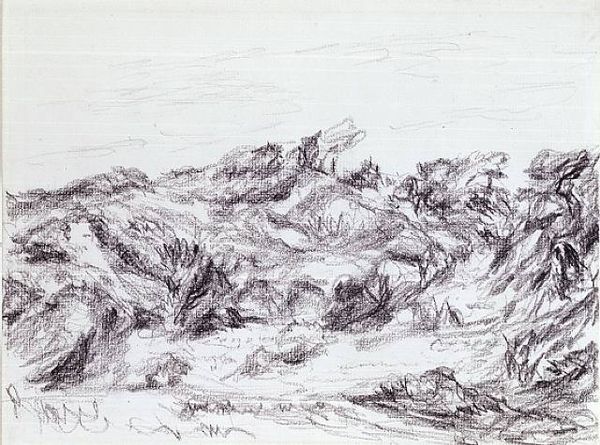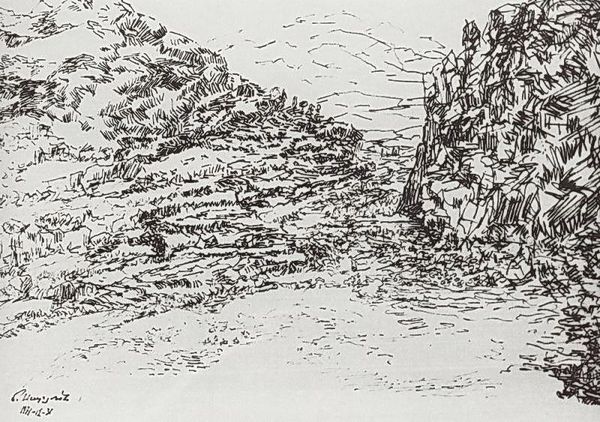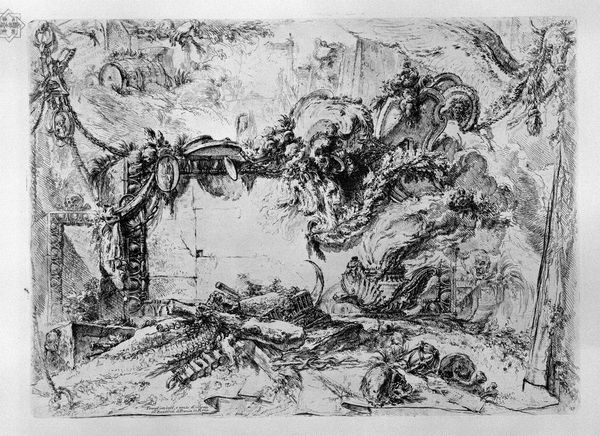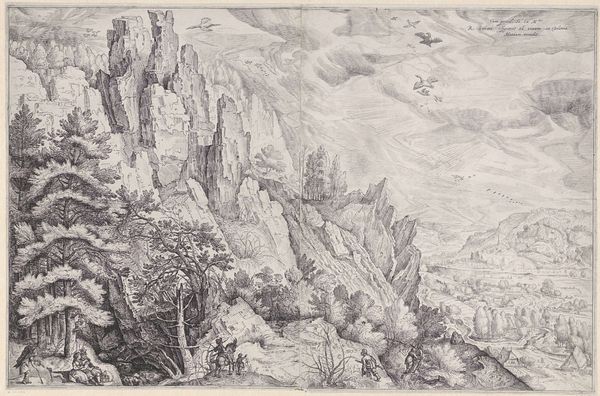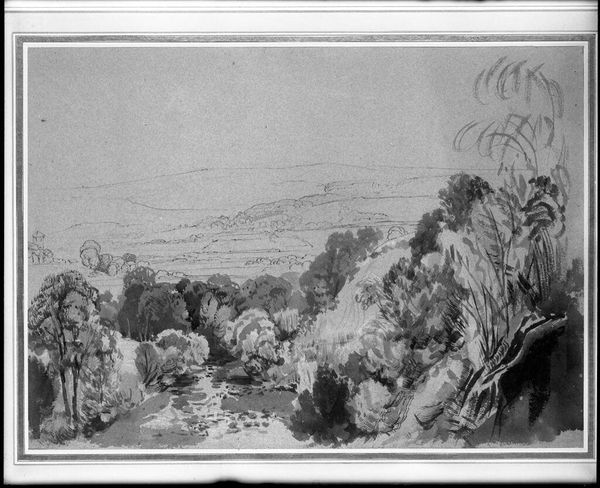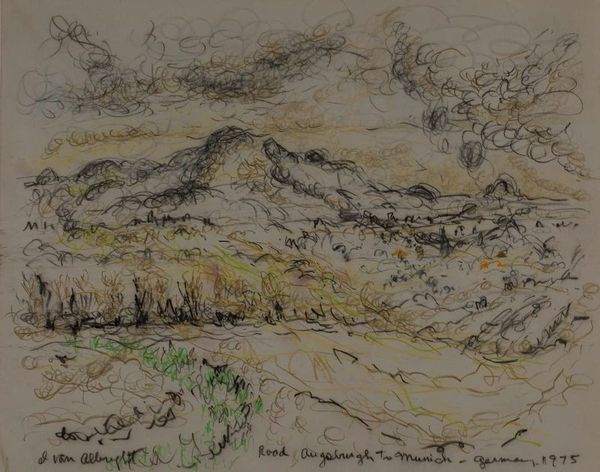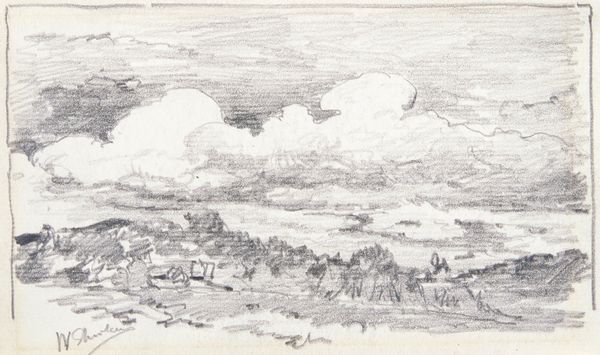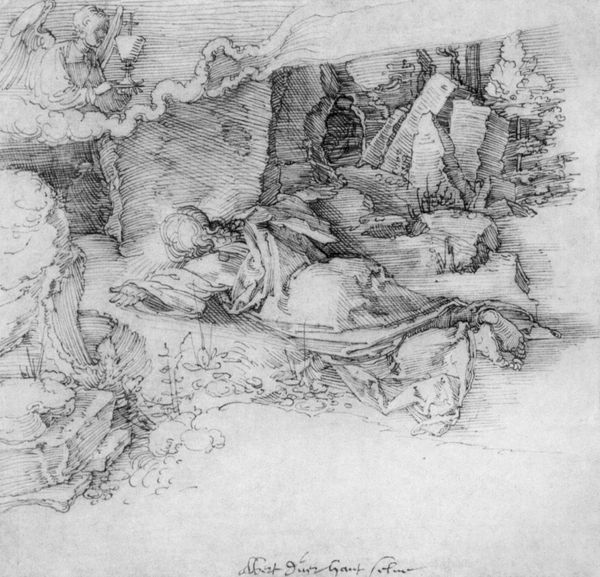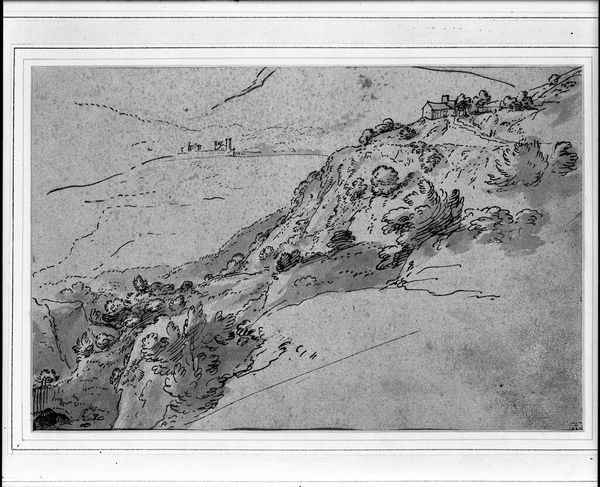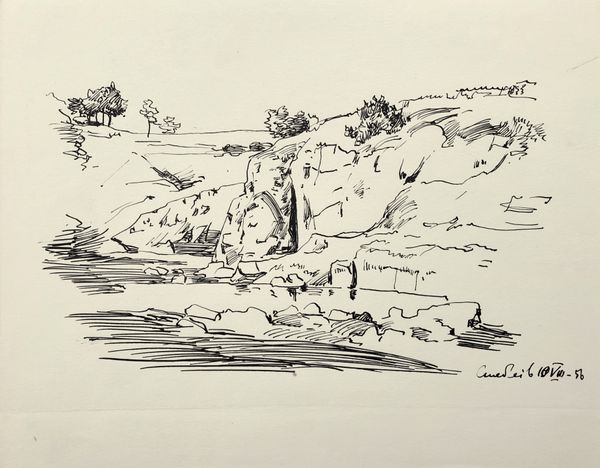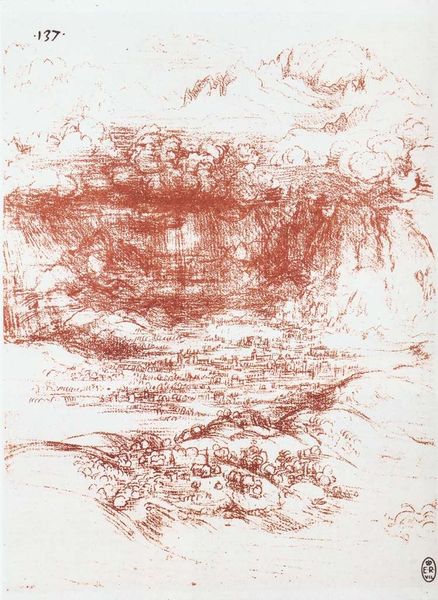
drawing, ink
#
drawing
#
landscape
#
ink
#
romanticism
Dimensions: 441 mm (height) x 587 mm (width) (bladmaal)
Curator: We are looking at Lorenz Frølich's drawing, "From the Mountains near Subiaco east of Rome," created in 1847. The artwork employs ink to portray a detailed mountain landscape. What strikes you first? Editor: The starkness, definitely the starkness. The drawing appears very matter-of-fact. The rocky terrain seems so difficult. You sense the physical demands. Curator: Absolutely. Observe how the artist uses line to delineate the geological forms and the atmospheric perspective. The strategic shading gives volume to the mountain and the rendering of the clouds contribute to the dramatic sky. How do you perceive the distribution of light and dark, the chiaroscuro? Editor: The drawing renders texture effectively; the rough paper probably accentuates that tactility. Note the rendering of human labor implied. A figure with livestock struggles up an incline...it seems central. The artwork reveals the raw physical reality. Curator: It presents an intriguing balance between observed reality and artistic interpretation. The line quality shifts—thick, bold outlines versus delicate hatching. Editor: Exactly, one notices the means of production so viscerally; you can almost feel the weight of the ink. What size of nib was used, I wonder? The process involved a bodily labor and material investment to create such depth of visual experience. Curator: The relatively loose application of the ink contrasts beautifully with the detailed rock formations, a sophisticated formal dialogue. The artist evokes mood effectively, a potent element of Romanticism. Editor: Agreed. Beyond the emotional impact, however, lies the physical reality. The ink must be purchased and stored; the paper represents processed raw materials, often pulped textiles. What societal structures underpinned Frohlich’s activity? Curator: A valuable perspective on how this ink landscape implicates larger industries and material networks within Danish culture in the mid-19th century. Editor: Indeed. Examining production informs how we understand aesthetic choices. This interplay adds further depth to Frohlich's creation. Curator: It provides insight not only into art production but the relationship with landscape as shaped through human intervention. Editor: To sum up, examining the context provides not only valuable information about Romanticism but offers us perspectives on craft processes. Curator: I will ponder that concept further.
Comments
No comments
Be the first to comment and join the conversation on the ultimate creative platform.
